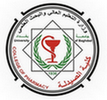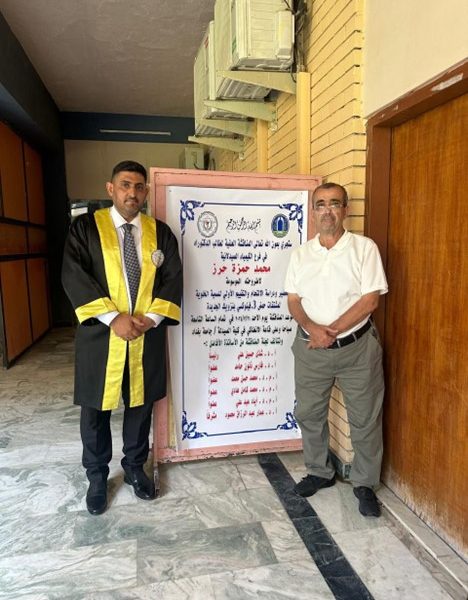The College of Pharmacy discussed the PhD dissertation entitled “In-Silico Study, Synthesis, and Preliminary Cytotoxicity Evaluation of New 3-Phenoxybenzoic Acid Derivatives” by the student Mohammed Hamza Heriz and the supervisor, Professor Dr. Ammar A. Razzak Mahmood, at the pharmaceutical chemistry department.The study aimed to synthesize nineteen new derivatives: five hydrazine-1-carbothiomide derivatives (3A-E) and three hydrazine-1-carboxamide derivatives (4A-C), six compounds from the 1,2,3-oxadiazole group (5 and 6A-E), and five benzamides (7A-E) from 3-phenoxybenzoic acid. All these new compounds act as VEGFR tyrosine kinase inhibitors. The study involved synthesizing the above derivatives and then characterizing them by IR spectroscopy, 1HNMR, carbon 13CNMR, and mass spectrometry (with high resolution) in addition to determining some physicochemical properties of the prepared compounds. The computational study of the synthesized derivatives included 3D model generation, molecular docking, molecular similarity, ADMET studies, density functional theory (DFT) studies, and molecular dynamics simulations. The cytotoxic activity of the 3A-E and 4A-C derivatives was evaluated in vitro against three human cancer cell lines (colorectal adenocarcinoma DLD1, cervical cancer Hela, hepatocellular carcinoma HepG2, and normal cells). The derivatives (5, 6A-E, 7A-E) were tested against three cancer cell lines: colorectal cancer (HT-29), hepatocellular carcinoma (HepG2), cervical cancer cells (HeLa), and normal cells (MCF10A). The results indicate that compound (4B) is the most cytotoxic, achieving the lowest IC50 level against HeLa cells. Compound (4B), a strong representative of the prepared series, causes cell cycle arrest in the G2/M phase, increases the proportion of necrotic HeLa cells and apoptosis, and activates caspase 3. The EC50 value of compound 4B against VEGFR-2 kinase activity was similar to that of sorafenib. Overall, the results suggest that compound 4B has a promising future as a starting point for the development of new anticancer drugs. Three compounds (6B, 6C, and 6E) showed cytotoxicity against two of the three cell lines tested; compound E6 showed the lowest IC50 value and the second lowest EC50 value inhibiting VEGFR kinase among the compounds tested, and thus was selected for extensive bioassays along with HepG2 hepatocellular carcinoma. The study recommended studying the kinetics and stability of the intended compounds in biological fluids, performing in vitro ADMET analysis, and comparing the results with computer results.



